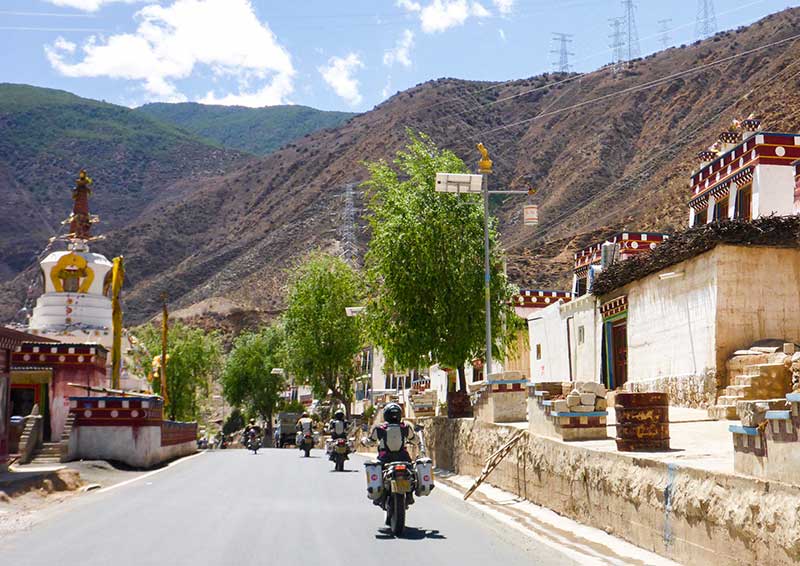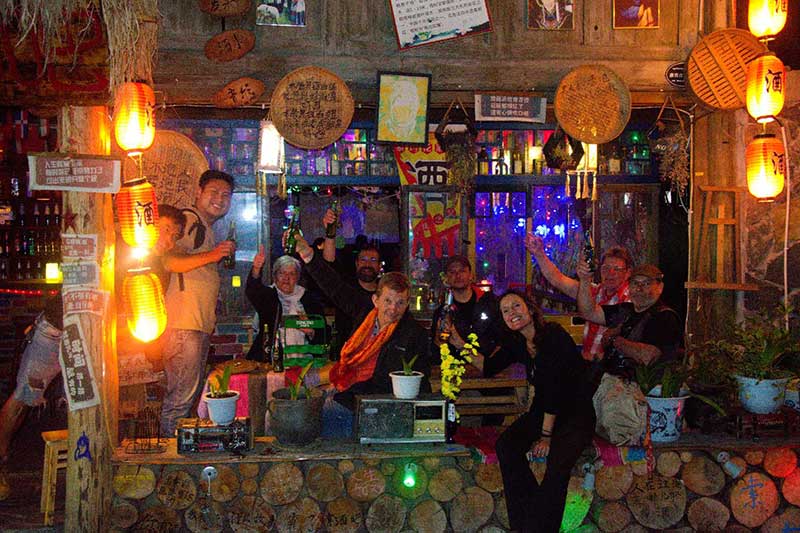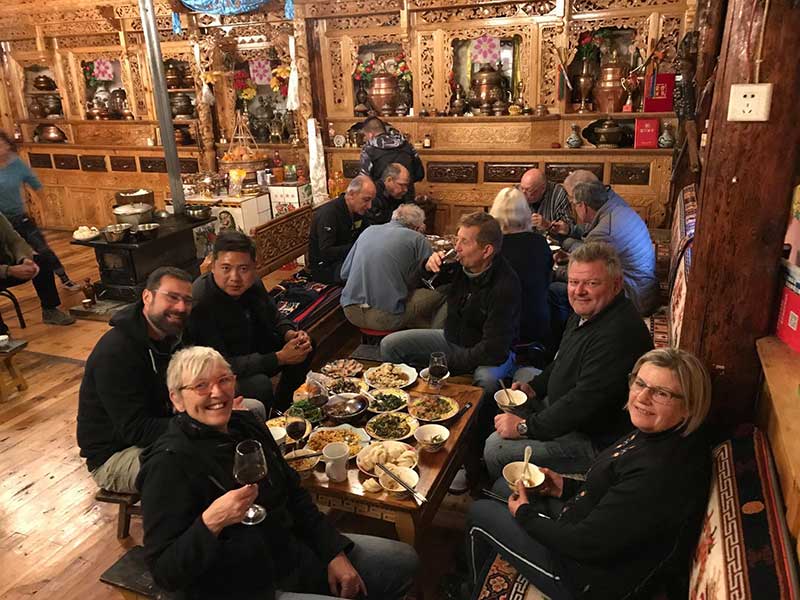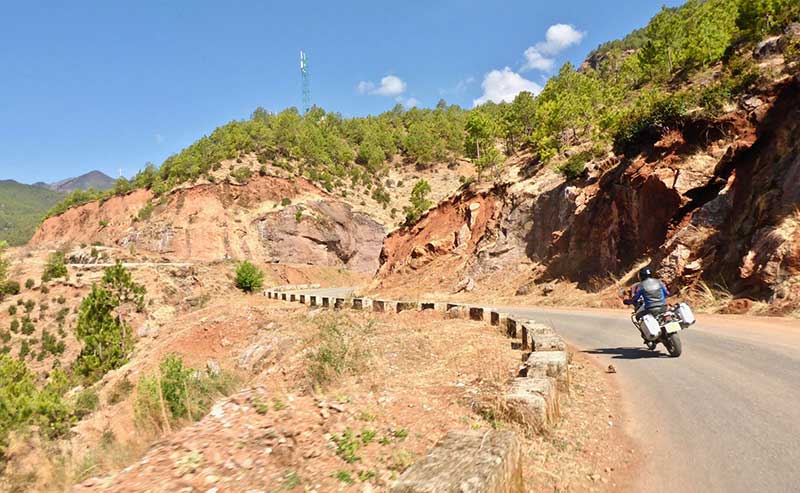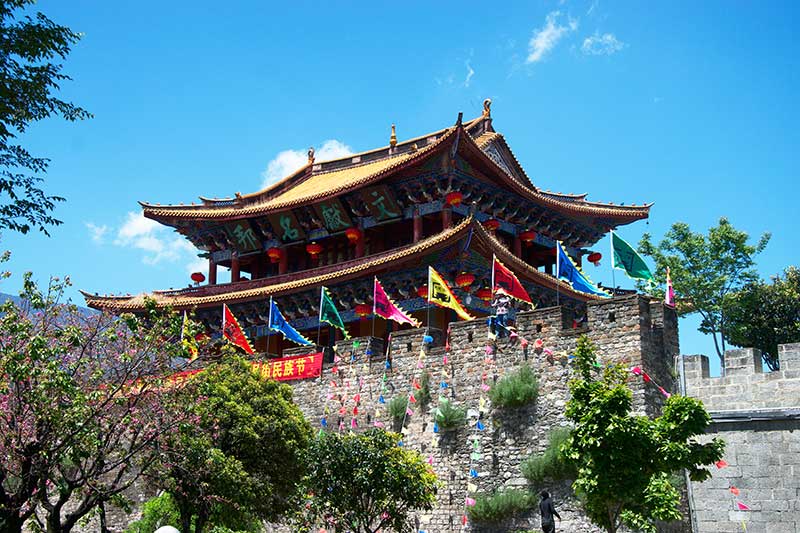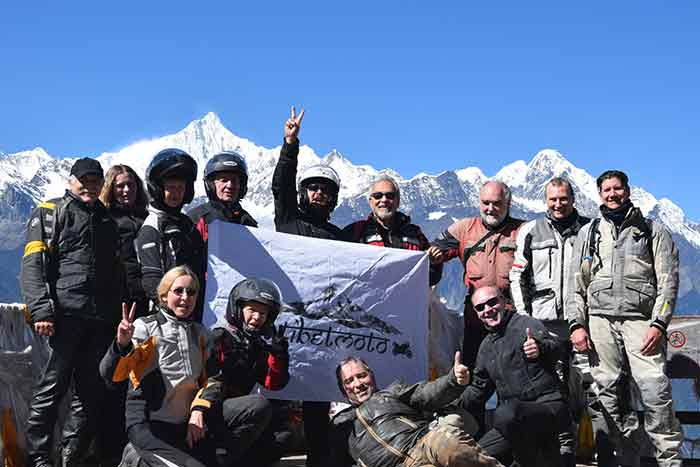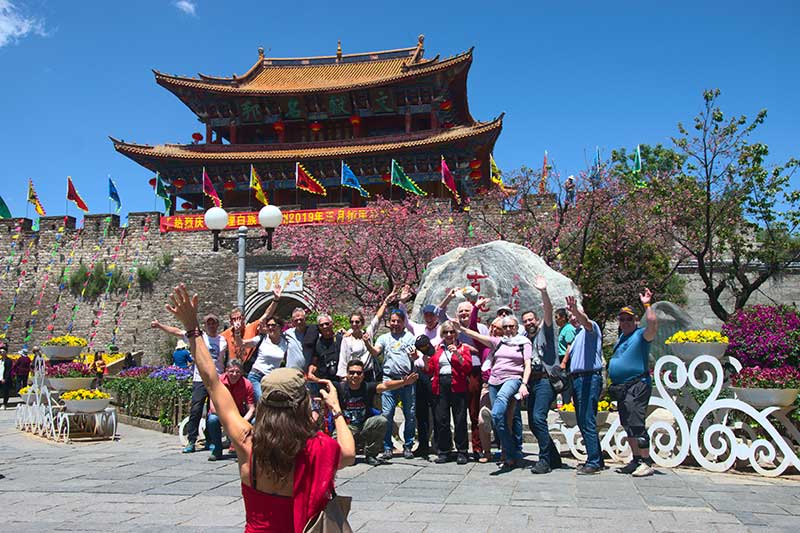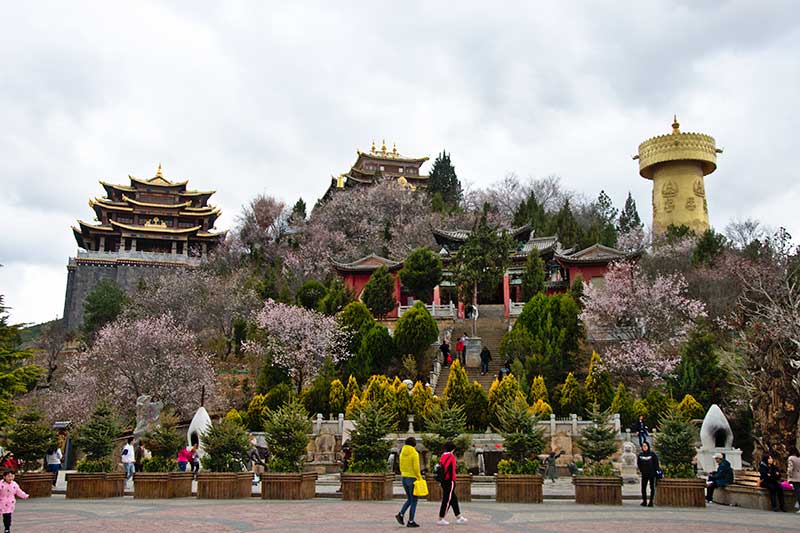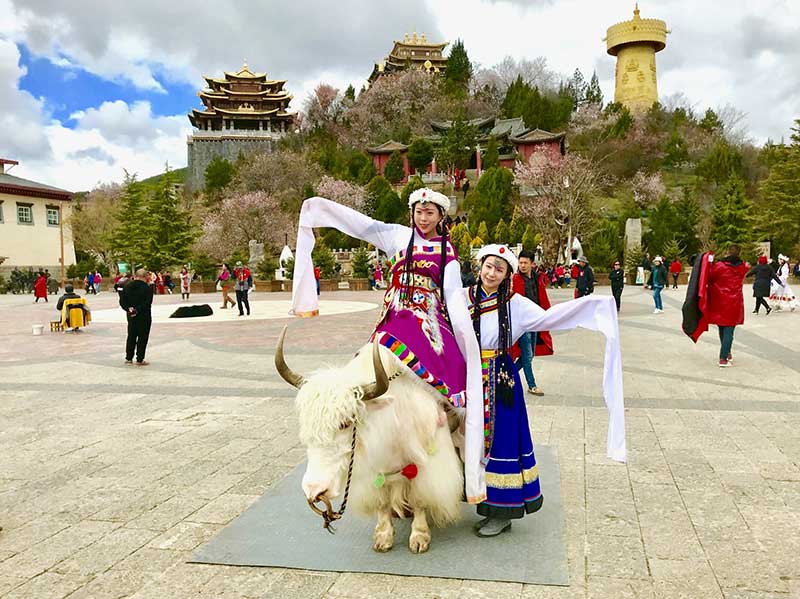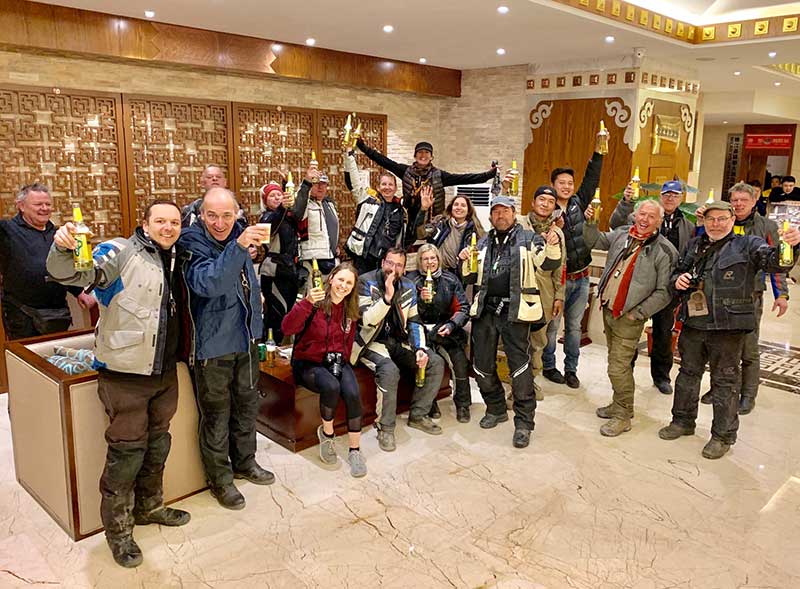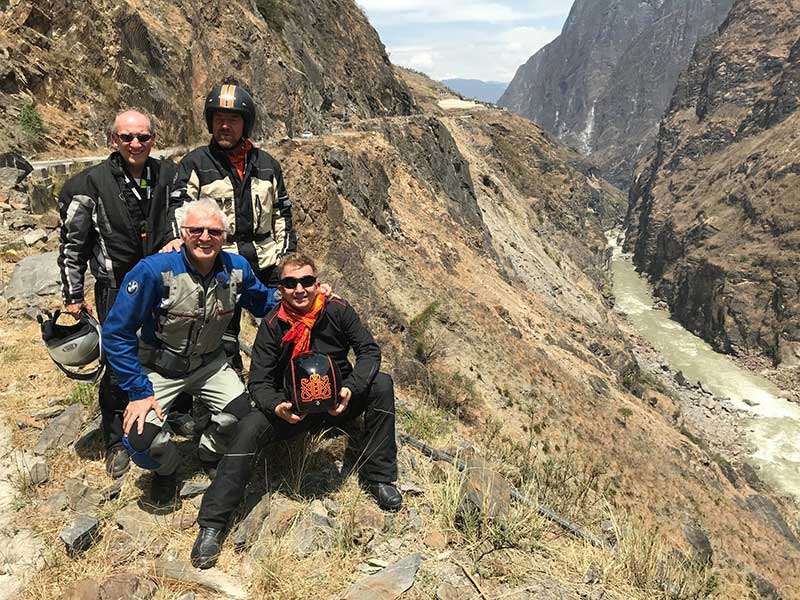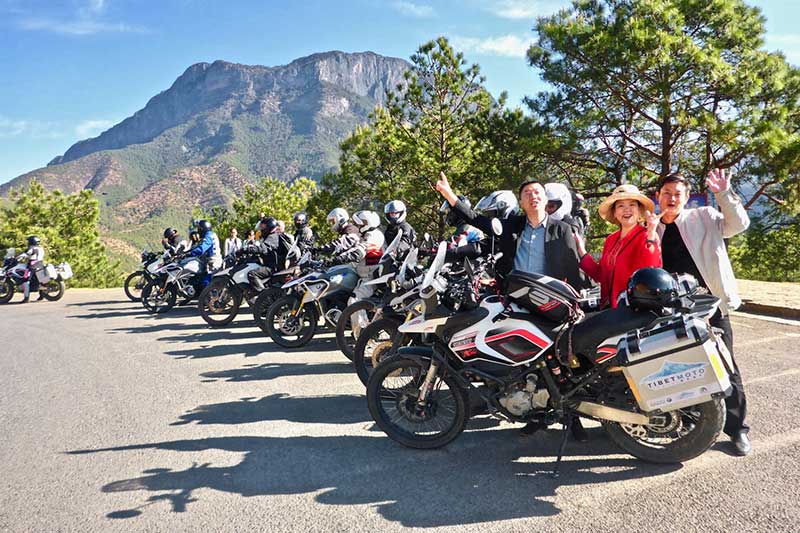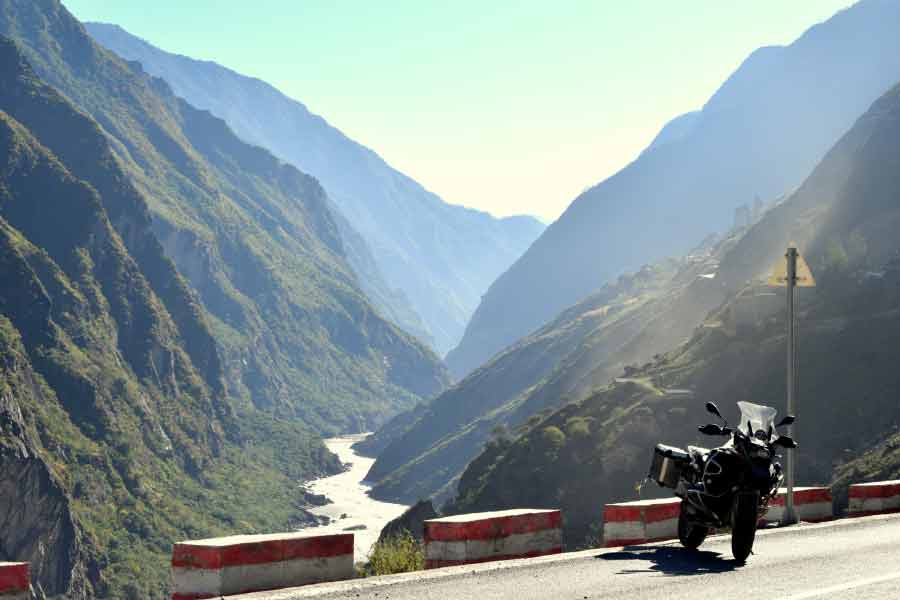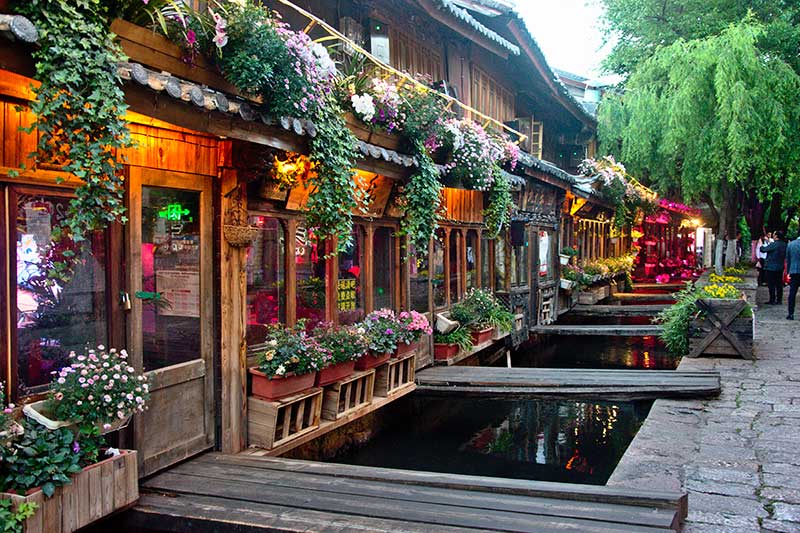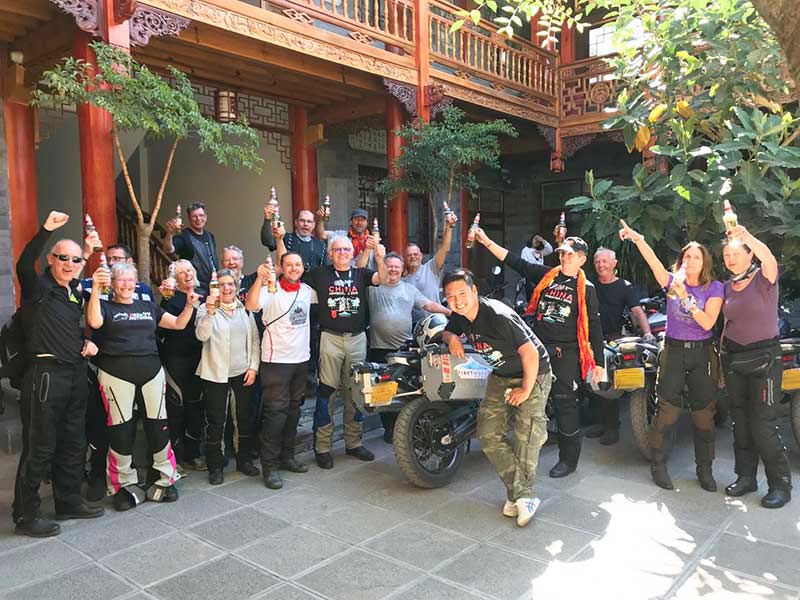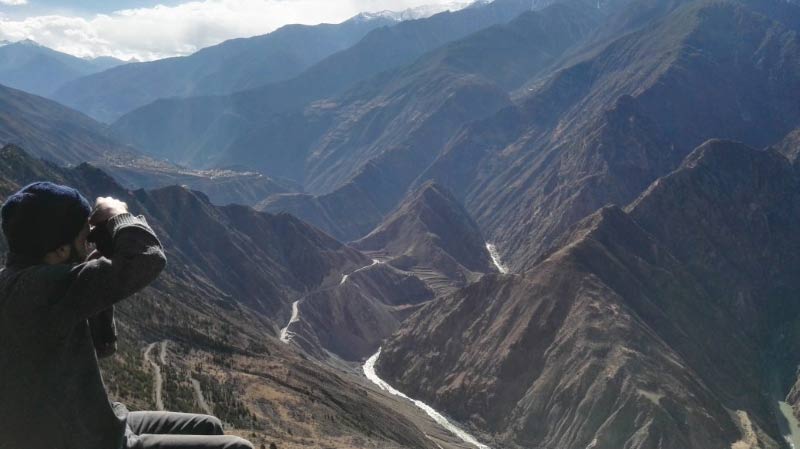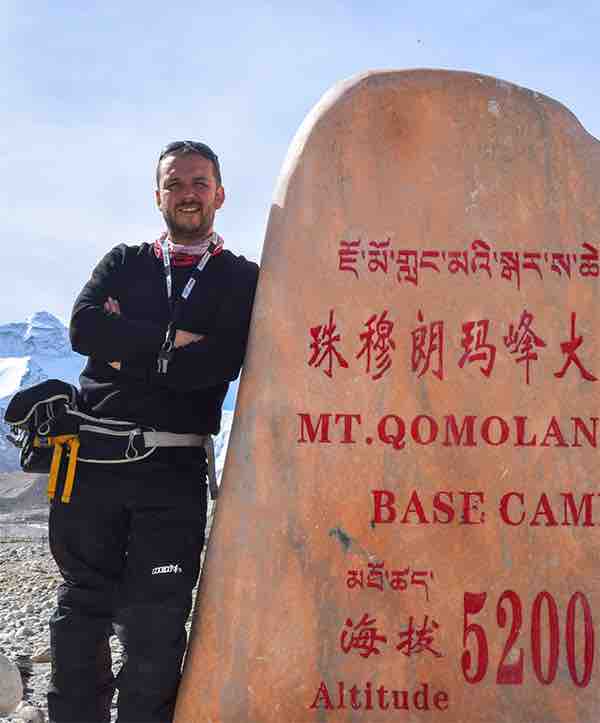





Yunnan Highlights Motorcycle Tour
Adventure through China´s Southwest
The Yunnan Highlights tour is one of our most popular China motorcycle tours. This ride takes us through previously untraveled regions, including the greatest highlights and motorcycling routes of China’s southwestern regions. In Yunnan, you can still get a feel for the authentic China as it was before the transformation of recent decades. The landscapes on this motorcycle tour through Yunnan are so varied that it’s like a continent to itself. Yunnan is the northern neighbour of Myanmar, Laos and Vietnam, a region of towering mountains, gorges and rice terraces. The Himalayan foothills, the mighty Yangtze and Mekong rivers, subtropical landscapes and the peoples and ethnic groups that have preserved their own cultures, religions and languages over the centuries all come together as a rich tapestry. The top of the holy Tibetan mountain Kawa Karpo is Yunnan’s highest point at 6,740 meters, the lowest point is on the banks of the Mekong at only 470 meters. In between, you can experience twisty mountain roads, cultural treasures and ancient towns, amazing Chinese food, and of course plenty of adrenaline on the ride.
The stunning scenery of Yunnan, the wealth of natural diversity and the pulse-quickening panoramic roads not only made a deep impression on us and prompted us to open our first motorcycle tour base in Shangri-La, where this tour will start, nearly ten years ago.
Read more
The legendary town Shangri-La belongs to the Tibetan regions of southwest China. Shangri-La lies in a broad, high valley, surrounded by grassland with grazing yaks and mountain ranges that mark the beginning of the Himalayas. From here, we enter Tiger Leaping Gorge, one of the deepest in the world, flanked by towering cliffs and a majestic 5,500-meter mountain range. We follow the Yangtze to the west and take a lonely mountain road to a stone village that was built on a clifftop perch to protect its inhabitants from the notorious Yangtze river pirates. After crossing a pass at almost 4,000 meters, we arrive at the azure blue Lugu Lake. Its shores and the surrounding mountains are the home of the Mosu people.
We’ll take plenty of time to visit the old town of Lijiang, a UNESCO World Heritage Site, as well as other beautiful sights in this high valley, at an altitude of 2,600 meters. Our ride then takes us back to the Yangtze, which we follow down into the subtropics. As the temperature rises, wheat fields soon give way to small plots of banana trees and tea plantations. Continuing along the Yangtze, we reach Dali, a former kingdom on the Tea Horse Road, an ancient trade route from China to Burma and India. Dali is nestled between the 42 kilometer long Erhai Lake and the 4,000-meter Cangshan Mountains, which we are going to tackle tomorrow. We then reach the Mekong, a river that rises in a remote corner of the Himalayas and flows down into southeast Asia. Following the river as it snakes northward, we reach the provicial border of Tibet province. From there, we ride deep into the Himalayas. Forbidding, virtually lunar landscapes and canyons await us in this region, which is inhabited by ethnic Tibetans. We’ll come across a green oasis hidden in a side valley and spend the night in a traditional farmhouse belonging to a local Tibetan family, where we can experience the life and culture of the Tibetans first-hand. The next day, we’ll explore the course of the Mekong and discover Three Parallel Rivers of Yunnan in a nature reserve and UNESCO World Heritage Site.
We’re approaching the literal high point of our tour – riding on tracks and through gorges, we have awe-inspiring views of the sacred 6,740-meter Kawa Karpo mountain and soon reach the Mingyong glacier that flows down from its summit. We’ll stay overnight at the foot of the mountain, at the “flying temple”, and witness the spectacle of the snow-covered peak at sunset and sunrise. On our last day in the saddle on the way back to Shangri-La, we’ll have one final opportunity to enjoy the full splendour of the Himalayas. Over hundreds of bends, we’ll tackle the Pass of the White Horse, the highest of the tour at 4,292 meters, and wind our way down to Shangri-La, bringing us back to the alleys of the quaint, entirely wooden old town of Dukezong.
If you want to experience the authentic Middle Kingdom and its spectacular landscapes, far from the crowded cities and postcard sights, this tour is for you – join us and explore China in a way that only few have done before.
I had …
… a lot of fun on the tour. We got along well within the group and the guides were also very nice. The tour was very well organized.
Motorcycle Tour
A beautiful tour through deep gorges and over huge mountains. The tour offered a breathtaking view which I will remember for a long time. The roads were very well paved and were great to ride.
5 Stars
It is truly a discovery tour. There was something new every day and we never got bored on the tour. Thanks to Tibetmoto for the good organization.
![]()
![]()
![]()
![]()
On Request
Shineray X5 400: 2,250 US$ / 14,380 CNY
BMW F 800 GS: 2,790 US$ / 17.880 CNY
BMW G 310 GS: 2,580 US$ / 16,480 CNY
Pillion: 1,500 US$ / 9,580 CNY
Single Room: +250 US$ / +1,600 CNY
9 days / 8 nights / 7 riding days
Accommodation in mid-range hotels and guest houses.
Tibetmoto Tours …
… has put together a very nice tour with a lot of variety, huge gorges and wide mountain views. The tour was a lot of fun in the group and I’m already looking forward to the next tour with Tibetmoto!
The bikes …
… were very easy to ride on the tour. The winding roads in the gorge and on the mountains were easy for an experienced driver like me and were a lot of fun. For that alone I would book the tour again.
It’s been …
… a long time since I found such a well-organized tour as this one. The many highlights, such as the city of Lijiang or the deep Tiger Leaping Gorge, were just as worth seeing as the biggest prayer wheel in the world in Shangri-La. But my personal highlight was spending the night with a Tibetan family. Excellent!
Yunnan Highlights Motorcycle Tour – Itinerary
![]()
![]()
![]()
![]()
Questions & Answers
All our itineraries give you a good overview what you will experience and discover when booking with tibetmoto. The itineraries are nevertheless best understood if they are seen as a suggestion rather than as a 100% planned and a thousand times done way of traveling. We like to keep every tour, every adventure, every trip unique and special. We are proud to say that we have never done a trip two times exactly the same way. Our team does not like to offer mainstream tourism tours, and we believe that people enjoy their time best when they have freedom and possibilities to choose from. Freedom and flexibility are very good ingredients to cook an exceptional discovery or adventure, to meet unusual people and visit off-the-beaten-track places.
After arriving at the camp ground we pitch up the tents, our team will set up the mobile kitchen, the electricity generator is being started and we can think of having a cold beer. All supplies and the luggage is carried by our supply truck. We do not have always pre-chosen camp grounds which are always frequented by us, since every expedition is different. Depending on the time in the afternoon we start looking for “the perfect spot”. Perfect spots have a water source such as a river or a lake and a flat piece of land for the tents. Some spots we use more frequently since they are so perfect that the location is hard to beat. Camping together with nomads offers an opportunity to experience their way of live, culture and habits. Sitting in the evening together in a nomad tent somewhere on the Tibetan grassland and listening to Tibetan nomads` songs is a truly genuine experience.
Dinner is being served in a large dining tent where we have tables and chairs to comfortably sit together, eat and drink. The separate, smaller, sleeping tents are designed to accommodate each two people, but if you choose the “single room” option (you will find that option below each expedition itinerary) you will have your own tent. Our tents are army tents where you can almost stand upright. The sleeping “hard wear” is a foldable army field bed, which puts your body about knee height away from the ground. We provide you with the entire hard wear, plus blankets and insulation mats. The only item you should bring along is your personal sleeping bag. If you don´t want to bring your sleeping bag all the way to China we can provide you with a new sleeping bag for a reasonable price.
You will need your passport, a pass picture, national driving license, international driving license and flight ticket. Please be sure to make photocopies of all of your important travel documents and carry them separately. They can be invaluable in an emergency.
We also need a scan of the Chinese visa six weeks before the tour starts.
All scanned documents should be sent to us on an A4 sheet of original size
A home stay is an opportunity to get access into another culture by joining the host family for dinner and breakfast and sleep under their roof, as their guest. Most families live together in a several generation house, from children to old grandparents. A lot of home stays are semi-farms with at least a few cattle such as chicken and cows around the house. Often are fields attached where family member go to work after breakfast. Here, local family and work life can be experienced as it is instead of “only” observing it from the outside.
We believe that joining a home stay is on of the best ways to get in touch which what surrounds you in a foreign country.
For the Tibet and China motorcycle tour you need a valid national and international driver’s license.
In China, the currency is the CNY (Chinese Renminbi). The exchange rate is around 1€ to 7.56 CNY (as of 05/2020). The CNY is not a freely convertible currency, so you cannot get it at every bank in Europe. The exchange rate, which is determined by the Bank of China, can be observed under the following link: http://www.boc.cn/sourcedb/whpj/enindex.html
However, we recommend withdrawing a larger amount of CNY from an ATM with all major credit cards or debit cards after arriving in China. Our on-site tour guide is happy to help. Due to the often very poor exchange rate for the CNY in Europe, it is not worthwhile to exchange significant amounts of CNY in Europe. There are also many ATMs in Lhasa where you can withdraw money. Our experience shows that the majority of our participants spend around 20€ a day.
The luggage will be transported in the support vehicle. Don’t forget that on domestic flights, the pastries usually cannot exceed 20 kg!
For a motorcycle tour you should bring motorcycle clothing including a helmet. Of course you also should pack warm clothing (as layers or as undersuit). It can get cold! You should also bring gloves and a rain suit.
The roads on the motorcycle tour are mostly paved (with a few exceptions). Due to the new asphalting of road sections, it can temporarily lead to a poor condition of the road. The paved roads are mostly in good condition. However, there may be isolated potholes or gravel lying on the ground. The route on the motorcycle tour also includes sections with new asphalt, on which you can enjoy European standards or even better. These routes are wonderful to ride! Due to moisture and the difficult to see oil or diesel traces, however, extreme caution is always required!
Deposit for a rental motorcycle (partial cover):
The following cash deposits are required:
Shineray X5 400: EUR 500
BMW G 310 GS: EUR 1,000
BMW F 800 GS: EUR 1,500
If the participant/motorcyclist causes damage during the Tibet motorcycle tour, the deposit is the maximum amount.
Entry/Visa:
All participants in the Tibet and China motorcycle tours require a visa to enter China. The passport must be valid for another six months. You have to apply for the visa yourself at a service center, the Chinese embassy or on behalf of an agency. Due to frequent changes in the application procedure, we recommend that you use an agency. This is slightly more expensive than filing your own application, but it saves you a lot of work and time.
We will apply for all of the necessary Tibet permits for the motorcycle tour.


